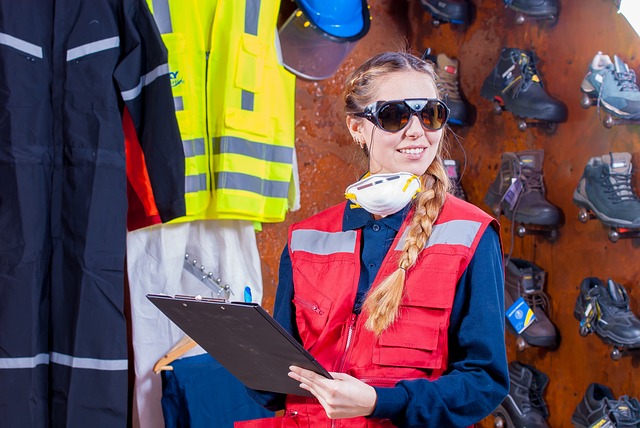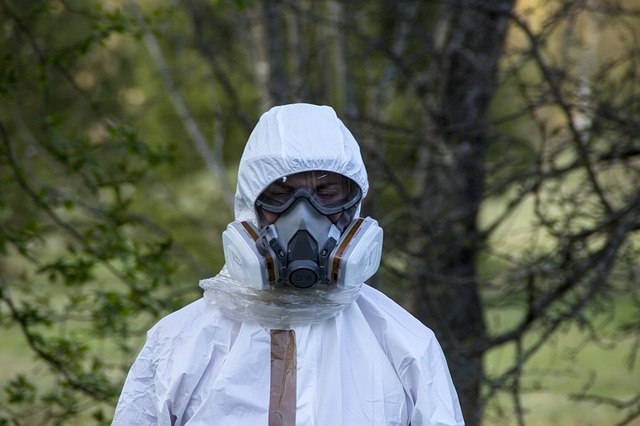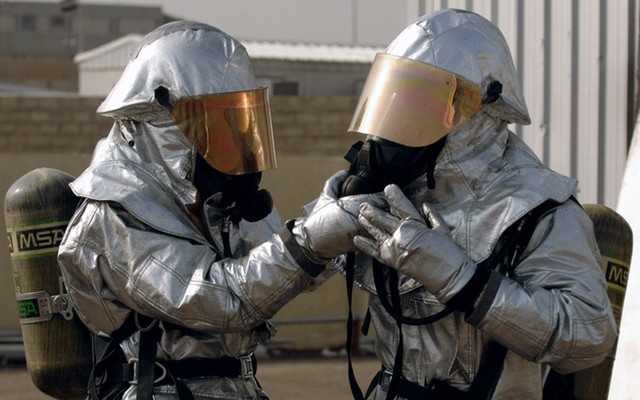Respiratory fit testing is a crucial aspect of workplace safety, as these devices play a very important role in the protection of workers. It is essential that both workers and employers understand how to use them properly, and you can trust ACUTE Environmental & Safety Services to make sure you have the hands-on training needed to conduct proper respiratory fit training. Read on to learn more, and contact ACUTE today if you need additional information.
Respiratory Fit Testing: The Importance of Training
A respirator is a device designed to protect the wearer from inhaling particulate matter, including airborne microorganisms, fumes, vapours and gases.
According to the Ontario Ministry of Labour, Immigration, Training and Skills Development, all workplace respirators must be appropriately fitted “so that there is an effective seal between the respirator and the worker’s face unless the respirator is equipped with a hood or a helmet.” This means that the respirator must be of an appropriate size for the worker’s face, and that any facial hair, scars, or other irregularities must not interfere with the seal.

Regular fit testing is the best way to make sure your respirator is doing its job.
Why Respiratory Fit Testing Is Important
Simply put, a respirator will not protect you if it doesn’t fit properly, leaving you vulnerable to contaminated air and exposing you to injury or even death. Fit testing, therefore, should be done every time the device is worn.
When employees must work in environments with insufficient oxygen or where harmful dusts, fogs, smokes, mists, fumes, gases, vapours, or sprays are present, they need respirators. These health hazards may cause cancer, lung impairment, other diseases, or death.
To work effectively, most respirators require an airtight seal between the respirator and the user’s face and/or neck.
Various factors could interfere with the seal, drawing contaminated air into the workers’ lungs. Facial hair, age, changes in body weight, earrings, head scarves, wigs, facial piercings, dental work, facial injury – any of these could compromise respirator seals.

Workers must pass an appropriate qualitative or quantitative fit test before using a respirator.
Methods of Respiratory Fit Testing
There are two basic methods of testing the fit of respirators: “qualitative,” where simple tests are used to check for signs of leakage, and “quantitative,” where tests actually measure the leakage using special instrumentation. Each method requires a trained professional to conduct an in-person assessment and training on the selection, care, and use of designated respirators.
Qualitative Testing: This method relies on a subjective sensation (taste, irritation, smell) of the respirator wearer to a particular test agent. This type of testing is appropriate for workers that make use of disposable and air purifying respirators where there is no immediate threat to life.
Quantitative Testing: This method utilizes a measuring instrument called a porta count machine to measure face-seal leakage. This format of testing is appropriate for those required to wear a self-contained breathing apparatus (SCBA) or other supplied air breathing apparatus, where the scenario indicates there may be an immediate threat to life – firefighters, for example.
Here’s a look at a fit test being performed:
Respiratory Protection and Fit Testing Training
A good training program will teach participants the legal and practical requirements for the use of respiratory protective equipment in industrial, medical, and agricultural environments. These courses typically run for half a day and are routinely customized to ensure coverage of specific brands and types of respiratory systems.
Training program topics include:
- Respiratory selection, use, and care
- Air purifying and supplied air systems
- NIOSH and provincial regulations
- Positive and negative fit check for air purifying respirators
- Limitations and equipment
- Qualitative and quantitative fit testing
- Record keeping
On-site quantitative fit testing is also available if requested.
Participants will learn by handling and/or fit testing air purifying, supplied air breathing apparatus (SABA) and self-contained breathing apparatus (SCBA), classroom interaction with experienced instructors, demonstration and hands-on training in the care and use of equipment, and detailed handouts, videos, and quizzes.
Employers, supervisors, and workers who use respiratory protective equipment in their workplaces will find participation in this training program both beneficial and informative. Joint Health & Safety Committee members and those wishing to increase their knowledge in respiratory protective equipment and programs are also encouraged to register.

On-site quantitative fit testing is also available during training.
Trust ACUTE For All Your Safety Training Needs
ACUTE provides comprehensive health and safety training, on-site safety services, and consulting services. With over 100 years of combined experience, our company staff offers more than theoretical or abstract ideas; ACUTE offers solutions.
We’ve trained over 100,000 workers, and keeping our clients safe is our #1 priority.
“For over 20 years, Ron Campbell and the professional team at Acute has helped us develop a continuously improving safety program customized to our unique needs in environmental testing and renewable energy services. We are proud of our safety culture and record supported by Acute training services.” – Hank, Environmental Consulting Company
ACUTE is located in Waterloo, Ontario, and services customers from cities such as Toronto, Mississauga, Brampton, Hamilton, Milton, Kitchener, London, Guelph, and others across Ontario. We can conduct this training at your facility or at our own training facility, whichever will suit your needs best.
There are some great benefits to both approaches. By completing your training on-site we can save your staff travel time, by completing your training at our facility you can benefit from our spacious training room, our state of the art hands-on training space, and full use of our break room.

